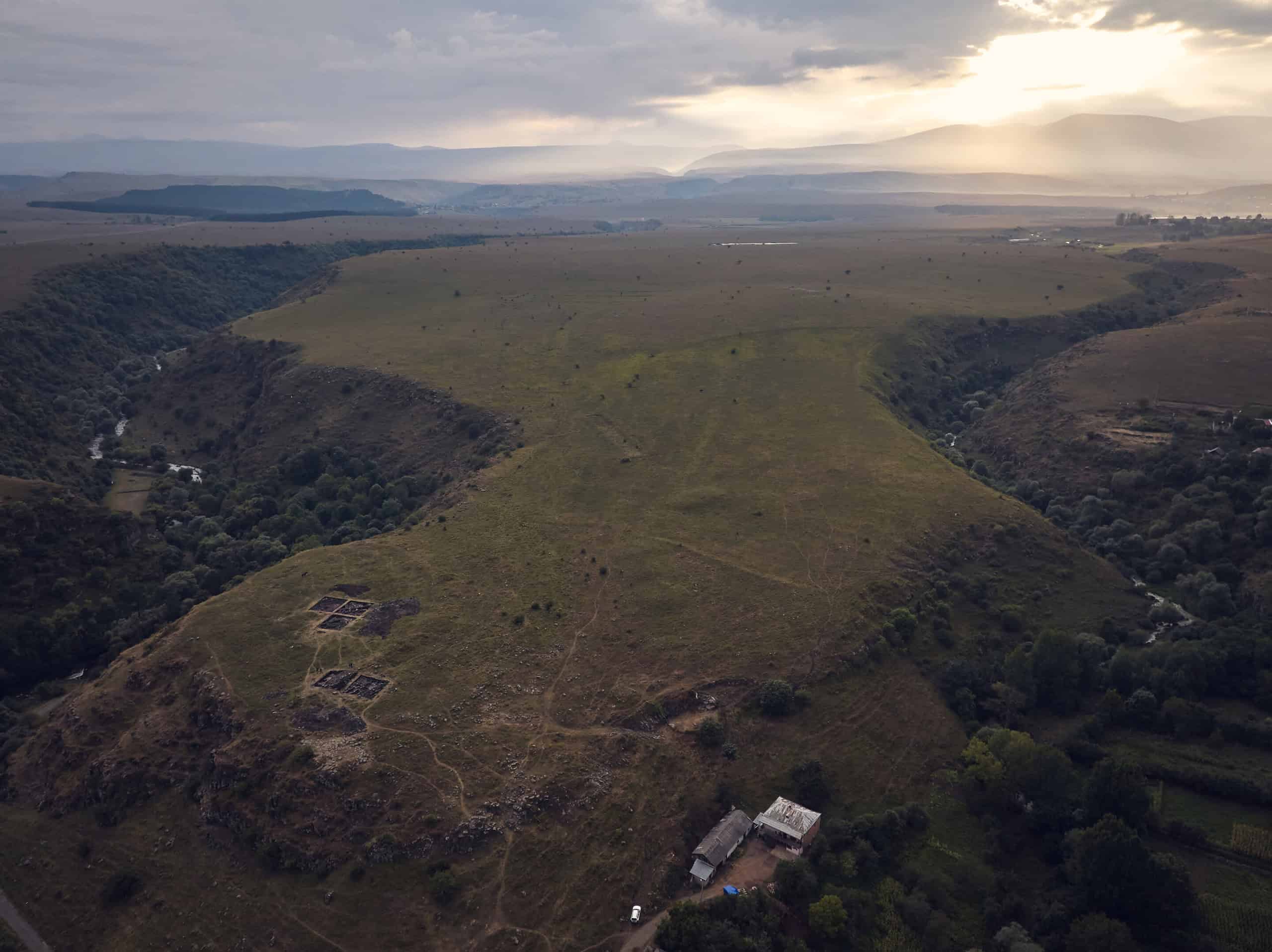The smooth functioning of the body’s joints, the flexibility of the ears and nose, and the shaping of bones are all made possible by the skeletal tissue known as cartilage.1 According to popular medical textbooks, cartilage is made up of only one type of specialized cell called a chondrocyte, which is small and secretes large quantities of extracellular matrix, giving cartilage its biomechanical properties.2 But now, new research makes these textbooks outdated.
More than a decade ago, while studying fat cells in the mouse ear skin, Maksim Plikus and his colleagues observed a puzzling pattern in dye uptake. “There were some fat cells that stained, which were the true adipocytes,” said Plikus, a developmental biologist at the University of California, Irvine. “Then there was another group of fat cells that didn’t [stain], no matter which marker.” Initially, he thought these odd adipocytes could simply be a type that stubbornly resisted dyes. However, upon digging deeper, Plikus realized that they were a completely new type of fat-laden cartilage cells that formed the pliable lipo-cartilage in body parts like the nose, ear and throat. “At first we really had to pinch ourselves because it made no sense,” Plikus exclaimed.
They called these newly-identified cells lipochondrocytes (LCs), and after a decade of investigation into their structure and function, the team published their report today in Science.3 These findings will expand the current understanding of skeletal biomechanics and open new avenues in regenerative medicine.
“This is ground-breaking research,” said Markéta Kaucká, a developmental biologist at the Max Planck Institute for Evolutionary Biology, who was not involved in the study. “They found that the cells have different morphology, gene expression profiles, functions, and biomechanical properties. It really is a new cell type.”

Researchers have discovered a new type of cartilage cell called lipo-chondrocyte, that is filled with large fat droplets (shown here in green) and is found in many mammalian species.
Maksim Plikus, University of California, Irvine
Despite its prevalence in the body, researchers have overlooked LCs and lipo-cartilage for many decades. Lipochondrocytes were first observed in 1854 by Franz Leydig in rat ear cartilage and then largely forgotten for nearly a century.4 Even research groups that stumbled upon the cells later did not study them or the tissue in detail.5 So, when Plikus and his team came across these cells that looked like fat cells but were present in the cartilage, they knew they had to examine them from every possible angle.
The authors started by cataloging the presence of LCs in the mouse body. Using different genetic drivers, they identified LCs in the cartilage of the nose, larynx, sternum, and ear. Upon tracking the growth of LCs through development, the team found that these cells live for a long time and have limited turnover. LCs were even present in the nose and ears of aged mice.
Depending on the location, the stiffness and pliability of cartilage varies. The team wanted to understand how the lipid vacuoles inside LCs modified these biomechanical properties of lipo-cartilage. After collecting lipo-cartilage, knee cartilage, and groin adipose tissue from one-month old mice, the researchers used different tests to measure how easily the tissue deformed and how much stress it could withstand. They observed that lipo-cartilage had a greater ability to resist tearing and deformation than adipose tissue but was less stiff than knee cartilage. This ability of lipo-cartilage to spring back to its original structure is what gives the ear and tip of nose their bounciness.
“Lipochondrocytes are like the bubbles in bubble wrap,” Plikus explained. “If you make a tissue out of the bouncy, non-compressible liquid-filled balloons, you will have elastic properties arising with analogy to the bubble wrap.” When the team stripped LCs of the lipid vacuoles, the tissue became more rigid than normal lipo-cartilage and similar in biomechanical properties to the matrix-rich knee cartilage.
“This will expand our understanding of skeletal biomechanics. Right now, people only think about the matrix,” Plikus said. “But in lipo-cartilage, biomechanics derive from the organelles inside of the cells, not from the extracellular matrix. And that is paradigm shifting.”
While LCs looked like adipocytes, whole-tissue lipidomics performed on ear lipo-cartilage and groin adipose tissue revealed that the composition of the different fats varied between the two cell types. Adipocytes absorb and accumulate dietary fat molecules to feed their fat vacuoles, while Plikus observed that LCs had a relatively higher concentration of saturated fatty acid chains, which are produced during de novo lipogenesis, when carbohydrates are converted into lipids. When the team analyzed the levels of various genes in these cells, they noticed that, unlike adipocytes, LCs either did not express or expressed only low levels of genes encoding proteins responsible for transporting fatty acids into cells. Instead, the cells expressed genes involved in glucose transport, de novo lipogenesis, and triglyceride synthesis, strongly indicating that LCs produce their own fat vacuoles.
Adipocytes can swell up or shrink down based on the available dietary fats. Since LCs did not express the genes to absorb external lipids, Plikus and his team were curious about their fate in the face of dietary fluctuations. They tested groups of mice on one of three different diets: a normal diet, a high-fat diet for 12 weeks, or a restricted-calories diet for 72 hours. While the animals’ weight and fat tissue showed the expected increase or decrease based on the diet, the size of the ears and the lipid vacuoles in the ear LCs remained unchanged. When the team injected the mice with fatty acids labeled with a fluorescent marker, they found no accumulation in the LCs.
“It’s really brilliant how these mechanisms could be decoupled from the normal systemic lipid production and metabolism,” Kaucká said. “You don’t want the locations which are in the ear and in the larynx to swell and enlarge when there’s an influx of excess calories.”

Raul Ramos and Maksim Plikus, developmental biologists at the University of California, Irvine, discovered and characterized the lipo-cartilage tissue.
Ethan Perez, University of California, Irvine
Finally, Plikus wanted to know if lipo-cartilage is present in other species too. The team first examined human fetal cartilage at gestational week 20 to 21 and observed numerous lipid vacuoles in the ear, nose, thyroid, and epiglottal cartilage tissue. They also noted fat droplets in the cartilage organoids that they generated from human embryonic stem cells. RNA sequencing revealed that the cartilage organoids expressed de novo lipogenesis genes, but not fatty acid uptake genes.
Expanding their study, the authors examined 65 other mammalian species and observed lipo-cartilage in many of them. “This makes a lot of sense. Mammals underwent a lot of adaptations and have novelties like the outer ear and the flexible tip of the nose,” said Kaucká. “These are all locations which correlate with the presence of lipocartilage.” Notably, the team found lipid-filled cartilage cells in species with thin, membranous ears, such as bats, suggesting a role for these cells in sound perception. The team did not identify lipo-cartilage in any of the non-mammalian species they tested.
Next, Plikus plans to expand this research in several directions. Unlike LCs, when lipid droplets accumulate in chondrocytes within joints, these cells become sick, resulting in osteoarthritis. A deeper understanding of how LCs manage to stay healthy can aid the development of novel treatments for the disease. He also plans to use lipid vacuoles as biomarkers for purifying cartilage grown from patient cells and morphing them into desired shapes to advance regenerative medicine and surgeries such as rhinoplasties. Lastly, Plikus is curious to find out when lipo-cartilage evolved. As for Kaucká, she is curious how lipo-cartilage contributes to shaping facial features and why LCs and this fat-filled skeletal tissue seem to be restricted to mammals.








Leave a Comment